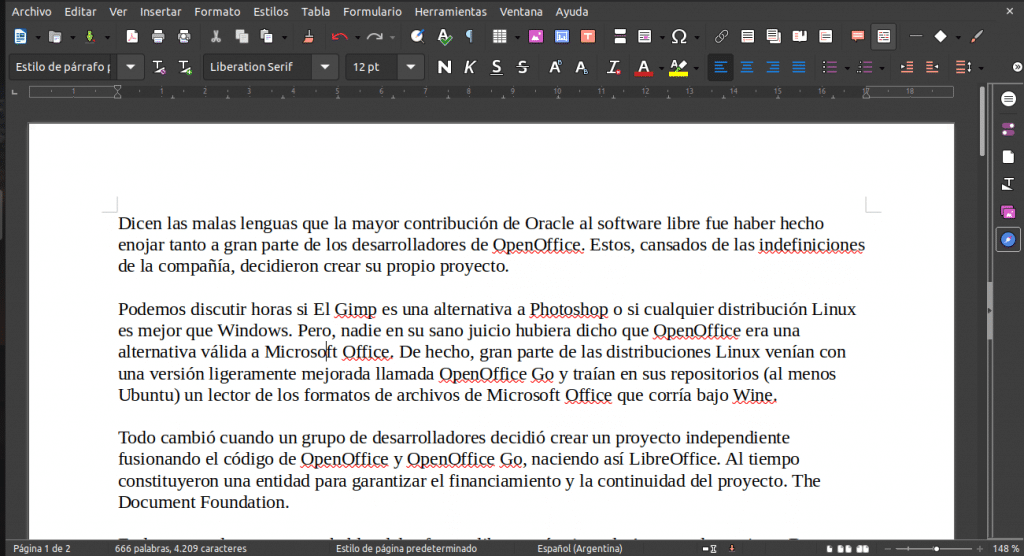The gossips say that Oracle's greatest contribution to free software was to have angered a large part of the OpenOffice developers so much. ANDThey, distrusting the intentions of the company, decided to create their own project.
We can argue for hours if The Gimp is an alternative to Photoshop or if any Linux distribution is better than Windows. But in 2009, no one in their right mind would have said that OpenOffice was a valid alternative to Microsoft Office.. In fact, most of the Linux distributions came with a slightly improved version called OpenOffice Go and they brought in their repositories (at least Ubuntu) a reader of the Microsoft Office file formats that ran under Wine.
Everything changed when A group of developers decided to create an independent project by merging the OpenOffice and OpenOffice Go code, thus creating LibreOfficand. At the same time, they formed an entity to guarantee the financing and continuity of the project. The Document Foundation.
Personally, I don't like to talk about free software in terms of A as an alternative to B. Nor do I stress the philosophical merits of free licenses. I think if you can't use the program's own features to recommend it, then it doesn't deserve the recommendation. The ability to read and modify the code is irrelevant if you are not a programmer, to be able to save your documents knowing that the ability to access them in the future does not depend on the whims of a company.
Nace una estrella
The origins of what we know today as LibreOffice hLet's trace them back to the 80s when a German programmer named Marco Börries created a word processor for home computers and MS-DOS called StarWriter.. Then he founded Star Division. Then a spreadsheet and drawing program were added so the trio was sold under the name StarOffice. The second version of the suite already had it also worked with Mac.
Some years after, a hardware manufacturer called Sun Microsystem bought the company from Börries. Sun had no tradition of distributing such software, and some believe it was cheaper for them to buy a company that developed software suites than to pay Microsoft what he asked for licenses for his thousands of employees.
It is not as far-fetched as it seems when you consider that in 2000 the firm allowed the free download of StarOffice 5.2 and also distributed it in CDs that were obtained in magazines.
Some years earlier, Netscape Communications, unable to compete against Microsoft, I had decided to release the source code for the Netscape browser. That was the basis of the browser that we know today as Firefox.
Sun decided to follow the same path and it released the StarOffice code in 2000. Two years later came OpenOffice.org 1.0.
2005 brought us version 2.0 and a new file format. The Open Document Format (ODF). The idea was that documents created with OpenOffice could be read by any other program ensuring that they could always be accessed.
Today even Microsoft Office supports the ODF format, and at the same time, each new version of LibreOfice improves the support for the native files of that office suite.
What's behind the code. The Role of The Document Foundation
Behind the LibreOffice project is The Document Foundation. TDF was created as a charitable foundation under German law. The entity is open for the participation of individuals as well as companies and states.
In its mission statement it says
The Document Foundation's mission is to facilitate the evolution of the LibreOffice Community into a new, open, independent, and meritocratic organization. An independent foundation adequately reflects the values of our contributors, users, and supporters, allowing for a more effective, efficient, and transparent community. TDF will protect past investments by building on the achievements of the first decade with OpenOffice.org, encourage broad participation within the community, and coordinate activities across the community.
